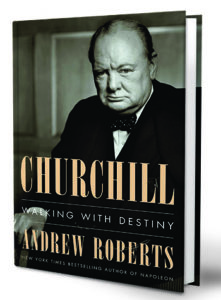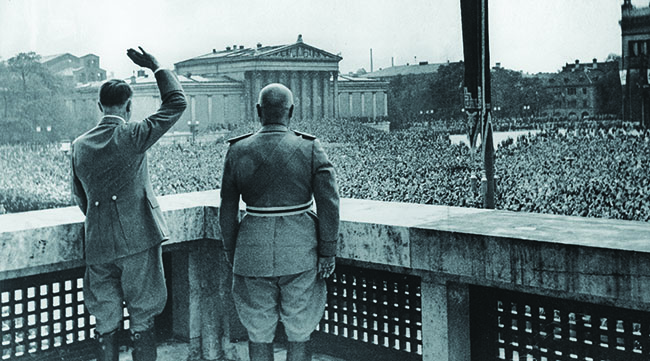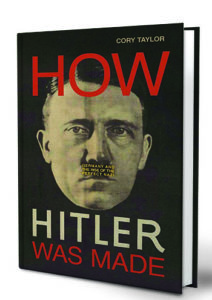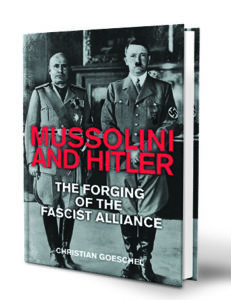
AS EARLY AS THE 1920s, Winston Churchill had complained to his friend Frederick Lindemann that “far too much has been and is being written about me.” One can only imagine what he must have thought toward the end of his life some 40 years later. Churchill is such an evergreen subject for biographers and historians that one has to wonder what author Andrew Roberts’s thousand pages could possibly bring to the party.
The short answer to that question is—quite a lot. Roberts, a popular British historian, has seemingly trawled all the available records for material related to Churchill, including gaining access to notes taken by King George VI during his weekly meetings with his prime minister. The result is arguably the most comprehensive biography of the British war leader ever produced.
Roberts is clearly sympathetic to his subject, and it is often hard to disagree with that assessment. Churchill emerges as a thoroughly larger-than-life character: emotional, driven, irreverent, unencumbered by self-doubt. He was a man of action, of huge personal and moral bravery—as was evidenced by his regular visits to the frontlines and his service in the First World War. Moreover, lead by a profound sense of destiny, Churchill had an overriding belief in Britain and its empire as a force for good. More than anything else, Roberts suggests, this sentiment was Churchill’s guiding light.
As usual, Roberts writes briskly and engagingly, applying his considerable research with a light touch. His book is resolutely sure-footed and reliable,
yet brims with anecdote and gossip. Although Roberts clearly admires his subject, he has not produced a simple, uncritical hagiography; he addresses those areas where Churchill is often criticized, such as his handling of the Bengal Famine of 1943–44, which killed millions of Indians in the British-ruled territory, with clarity and fairness.
Indeed, as Roberts makes clear, Churchill made many mistakes in his career—his authorship of the disastrous Gallipoli Campaign during World War I, to name just one, in which some 50,000 Allied soldiers died. He also espoused a few questionable causes, not least his support for the feckless King Edward VIII prior to his abdication in 1936. To many, then and now, Churchill’s staunchly held principles made him appear as a colonial throwback—someone on the wrong side of history. But, as Churchill himself wrote, “men must be judged in the test-ing moments of their lives,” and there were few moments more testing than those of 1939–45. The story of Britain’s war, therefore, is also the story of Churchill’s personal redemption: an object lesson in—as the time-worn phrase puts it—“cometh the hour, cometh the man.” Perhaps there’s a lesson for all of us in that. —British historian Roger Moorhouse wrote “The Man Who Started the War” in the February 2019 issue, and is the author of the 2017 book, The Third Reich in 100 Objects.
✯✯✯✯✯


295 pp. Prometheus Books, 2018. $25.
IN HOW HITLER WAS MADE, documentarian-turned-author Cory Taylor follows in the footsteps of Ian Kershaw, the eminent British scholar and author of a well-known two-volume Hitler biography. Like Kershaw, Taylor examines the societal forces that helped to fashion the former homeless man from Vienna and lance corporal in the Bavarian Army during World War I. But the author focuses in even greater detail on Hitler’s pivotal early years in Munich, where he became a rabid anti-Semite and Nationalist agitator. Taylor shows that a sophisticated network of ethnic chauvinists within Germany’s aristocracy and army essentially helped groom Hitler to take power in the belief that he would serve as their obedient puppet. The result is a remarkably engrossing study that helps to explain Hitler’s meteoric rise.
After Germany’s defeat in World War I in November 1918, the Far Right concocted a myth in which the so-called “November criminals”—Socialists and Jews—were the culprits for the loss. Bavaria was a hotbed of such conspiratorial thinking. On January 5, 1919, for example, a new organization called the German Workers’ Party met for the first time in a tavern in downtown Munich. By September, the military intelligence bureau of the German army sent Hitler and seven other propaganda agents to one of the party’s meetings to assess the group’s future utility in stoking German nationalism and militarism.
Hitler’s oratorical abilities quickly allowed him to take over the party, but he was not yet a finished product. Soon after, he came under the wing of playwright and newspaper publisher Dietrich Eckart, who sought to improve Hitler’s rough manners and to further tutor him about his anti-Semitic ideology. By 1920, Hitler was publicly suggesting that Jews should be “exterminated.” Though some flinched at his racism, the rising leader’s overall message of the need to revive German imperial dreams was well-received.
According to Taylor, “by the spring of 1920, Hitler’s name was on everyone’s lips in Munich’s cafes, beer halls, and restaurants.” Later that year, German general Franz Ritter von Epp donated 60,000 Reichsmarks from army coffers to help fund Hitler’s purchase of a daily newspaper, the Völkischer Beobachter: “The Austrian immigrant now had a means to influence the public like never before.”
Perhaps Taylor’s most persuasive insights focus on Hitler’s own emancipation from his formative backers. The author suggests that in Hitler writing his memoir Mein Kampf during his imprisonment in Landsberg in 1924, “the future Nazi dictator transformed into a true believer in his own special identity.” By the time Eckart and other nationalists concluded that Hitler was a megalomaniac, it was already too late. Hitler, not them, was the one doing the manipulating. After he was installed as Germany’s chancellor in January 1933, Hitler quickly came to wield absolute power over both the aristocracy and military leadership. In the end, writes Taylor, “Hitler’s energy and ambition would dwarf all of his backers.”
—Jacob Heilbrunn is editor of the foreign policy magazine the National Interest, and author of They Knew They Were Right: The Rise of the Neocons (2008).
✯✯✯✯✯

The Forging of the Fascist Alliance
By Christian Goeschel. 400 pp. Yale University Press, 2018. $30.
WE SPEAK SO OFTEN OF WORLD WAR II as “Hitler’s war” that we sometimes forget he wasn’t alone. At his side was the Italian Duce, Benito Mussolini. They forged as much of a friendship as two emotionally stunted men could manage; they worked together to drag Europe into war; and they stayed loyal to one another, after a fashion, until the very end. Today we regard one of them as the greatest monster in human history—and that fact has tended to distort or crowd out our image of the other. In fact, we sometimes forget about Mussolini altogether.
That’s why Mussolini and Hitler is such a welcome addition to the World War II library. Christian Goeschel restores the Duce to the wartime narrative, pointing out how essential the German-Italian alliance was to the coming of World War II, and how critical the personal relationship of the two men was in forging the Axis alliance.
Goeschel is at his best discussing their mutual visits, expressed in ever more grandiose, and sometimes even ridiculous, propaganda displays. They were beauty pageants, in a sense: Fascist spectacles meant to awe the locals and the world. Consider Hitler’s May 1938 visit to Rome, with its endless ranks of marching men and modern weaponry, tens of thousands of flags emblazoned with swastikas and fasces, and hordes of cheering spectators. These visits almost never featured substantive discussions between the two dictators, but rather were showcases for “powerful images of friendship and unity.” Fascist historians actually likened Hitler’s coming to Rome to Charles V’s April 1536 entry into the city after his victory in the conquest of Tunis. It’s easy to sneer at all of this as empty posturing, but Goeschel notes that such displays of power are a coin of the realm of diplomacy and foreign affairs.
The reality behind the unified pageantry was quite different. Even before the war, the Germans had nothing but contempt for the fighting qualities of their Italian allies, and many Italians saw their new friends from the north as thinly disguised barbarians. Indeed, we might say that the two groups least likely to be fooled by Hitler and Mussolini’s posturing were ordinary Germans and Italians.
Goeschel concludes with an eye to historical memory. After the war, both sides blamed the other for defeat: German generals railing on in their memoirs about Italian military incompetence, the Italians turning themselves into passive bystanders and helpless victims of German violence who, by some cruel twist of fate, had wound up on the wrong side in World War II. Such revisionism was a soothing form of historical amnesia that allowed them to forget the years of enthusiastic support for Mussolini’s violent regime. Perhaps this very fine book will help them to remember. —Robert M. Citino, World War II’s “Fire for Effect” columnist, is the National World War II Museum’s Samuel Zemurray Stone Senior Historian.





